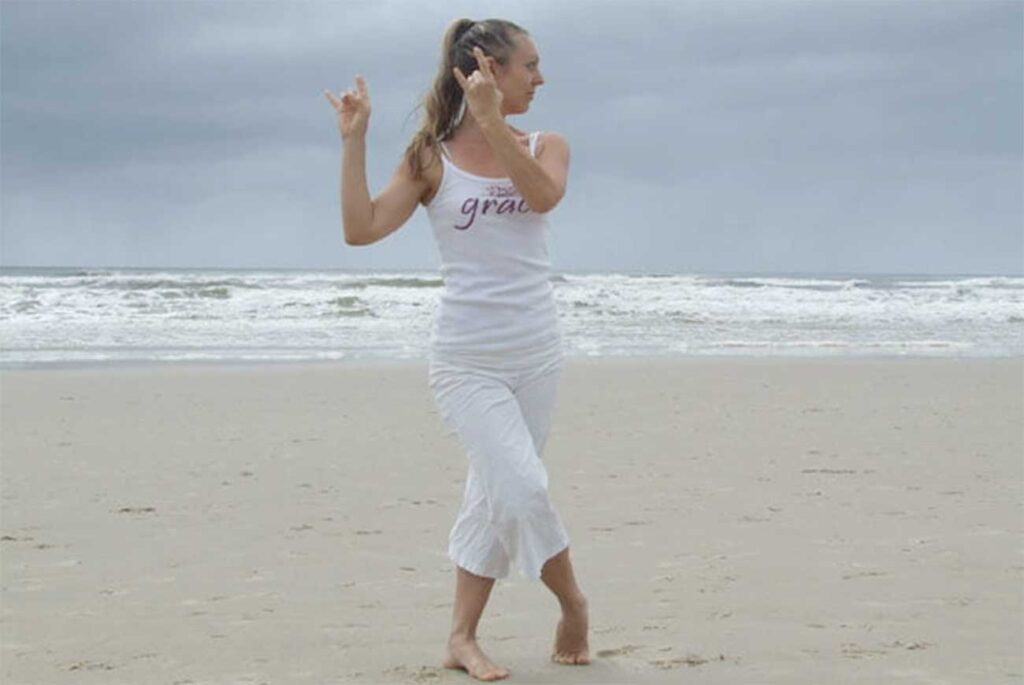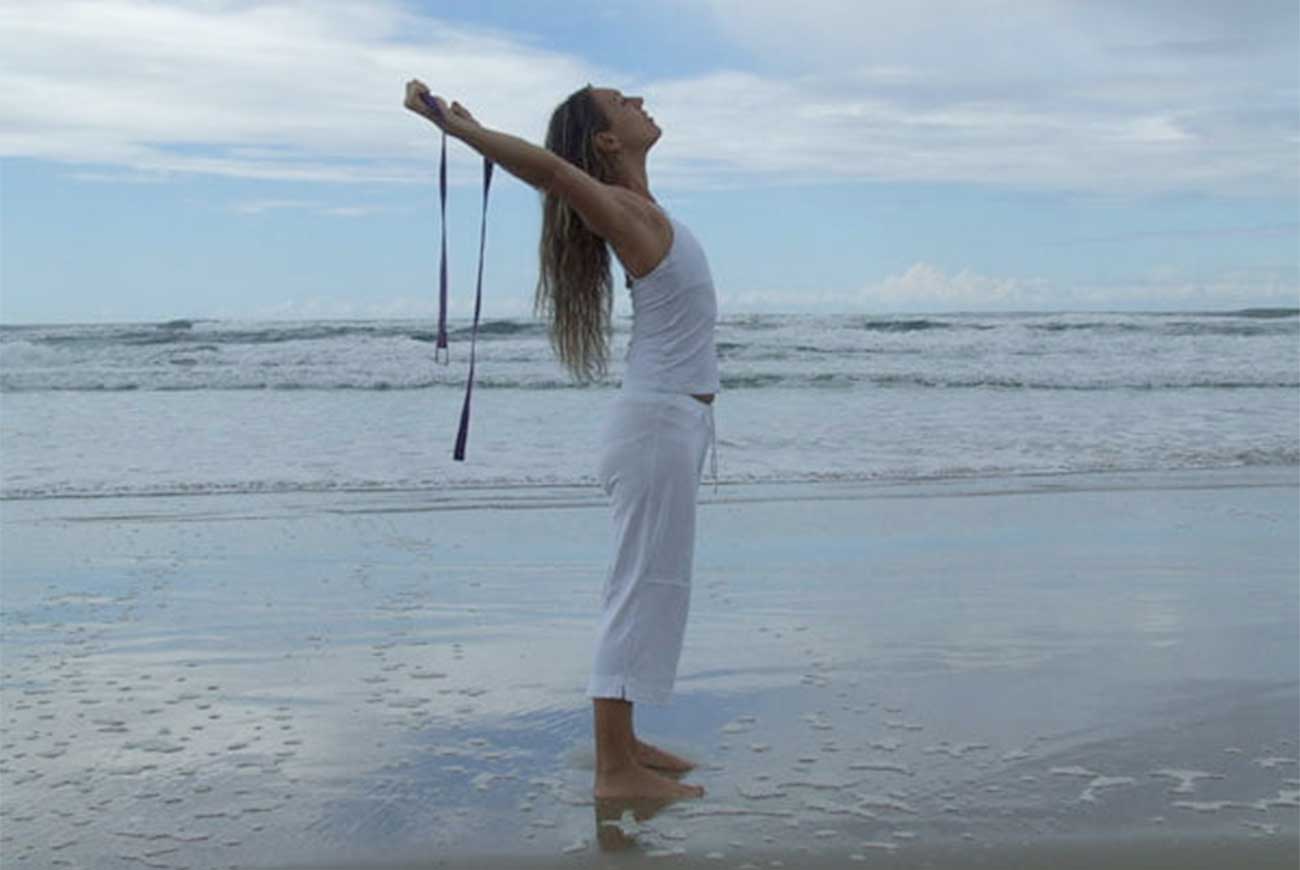“With anahata (heart chakra) awakening, one develops non-attachment to worldly things, and a constant feeling of optimism, understanding that good and bad co-exist, but there is also a world beyond this duality” – Sw. Satyananda.
Yoga works on many levels, from the purely physical, to the emotional and even into the unconscious realms of the mind and psyche. Whatever we do with the physical body has an effect on the mind and emotions, and that likewise a particular mind-set or set of beliefs will have its effects (good or bad) on the body.
So, to ?open the heart?, we have various tools to use in yoga. The yoga postures or ?asanas? are our physical tools. Amongst the asanas, it is the backbends that stretch and open the chest and lungs, and strengthen the heart. Stimulating the spine, which houses the spinal cord (as we do in backbends) also creates more of a feeling of being alive and present in the body. Thus backbends are energizing postures, alleviating fatigue. Opening the heart area physically also creates feelings of courage, strength, and openness.
We can also use non-physical tools in yoga, such as visualization and sound vibration, to go straight to the subtler layers of our being, the energy body and beyond. In yoga it is believed that there are seven energy centres called chakras within the energy body, lined up along a central energy channel that corresponds to the spinal passage in physical space. They are like junction boxes, holding high levels of the vital force, and distributing it throughout the body. Anahata chakra (the heart centre) is located in the spine directly behind the centre of the chest. Anahata chakra governs our experience of love, compassion for others and devotion. Certain yoga practices work to directly open anahata chakra. Those who have a balanced and awakened anahata chakra experience the same love for all, and have a deep sense of love for, and being loved by a divine presence. There is an attitude of non-judgment; the higher mind begins to awaken, and the good, aswell as the not so good, is perceived in all, no matter which is uppermost.
The following practices work in different ways to ‘open the heart’.
1. Shoulder Stretch with Strap. (No Sanskrit equivalent)
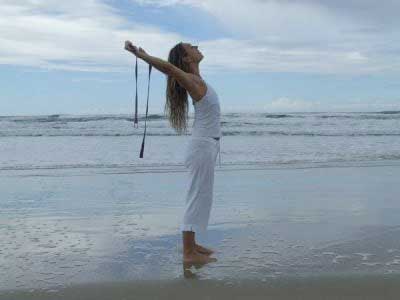
Take a belt between the two hands, with the hands wider than shoulder width apart. Inhale and as you exhale slowly raise the arms up to vertical, maintaining tension on the belt. Inhale again and as you exhale take the arms back slightly, until you feel the point of resistance in the shoulders. Turn your gaze upwards, and slightly tilt the heart centre up towards the ceiling. Try to allow the shoulders to relax down away from the ears. Stay in the pose for five, long slow breaths.
Inhale to bring the arms back up to vertical. Exhale and release the arms down.
Repeat this whole sequence once or twice more.
Benefits:
This practice stretches into tight shoulder muscles which then allow an opening of the upper chest.
2. Modified Setu Bandha Sarvangasana (Passive Upper Back Arch)
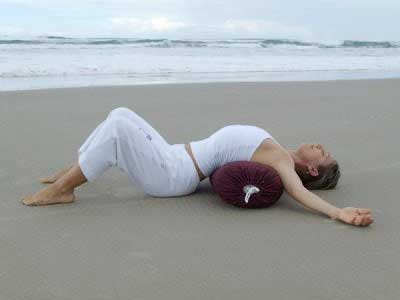
Place a bolster folded blanket across your mat. Lie down over the bolster so that the highest part is directly beneath the nipple line. Take the arms out to the sides, palms uppermost. If there is any discomfort in the lower back, bend the knees.
5-10 minutes.
Benefits:
This passive backbend is fantastic for stiff or injured practitioners, and also those recuperating from illness. The bolster can be placed anywhere along the spine to open the back in different places. Here however, I am focusing on using the bolster/s below the shoulder blades to assist in opening the upper back and chest area, which is often the least flexible part of the back.
Note: please use a rolled blanket instead if the bolster is too high. A blanket can be used to raise the height of the back of the head to alleviate strain in the neck.
3. Ajapa Japa (Silent Mantra Repetition)
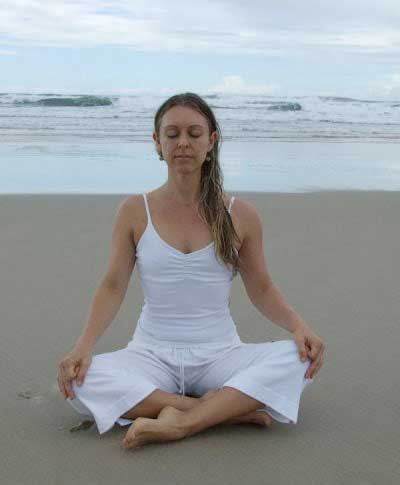
Come to a comfortable sitting position, and focus on the natural breath as it moves in the abdomen for a few minutes. Then become aware of a psychic pathway that exists between the navel and the throat. On the in breath, the breath ascends from navel to throat. On the out breath, it descends back down again, from throat to navel. Become very aware of this pathway.
Visualize a glass tube, connecting the navel and the throat. See the breath moving within the tube in the form of a thin stream of golden light, that ascends on the in breath, navel to throat, and descends on the out breath, throat to navel.
Feel the movement of the breath within the pathway.
Begin to introduce the mental repetition of mantra. On the in breath, as the breath rises from navel to throat, mentally repeat to yourself the mantra ?So?. On the out breath, as the breath descends back down again, from throat to navel, mentally repeat to yourself the mantra ‘Hum.’ Maintain full awareness of the breath, the psychic pathway, and the mantra.
10 minutes.
Benefits:
This is a complete practice in itself, and works to cleanse and open all off the chakras, and encourage a free flow of prana, the life force, through the central energy channel. It has a special effect upon anahata chakra.
4. Om Japa (Om Chanting)
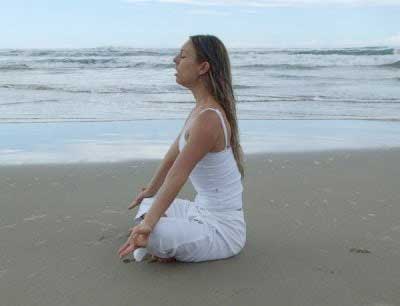
Find a comfortable sitting posture. Close the eyes. Lengthen and deepen the breath in preparation for the chant. Inhale. On the exhalation, create the chant of ‘Om’, for as long as it takes for the breath to run out. Try to feel the vibration from the chant in the heart centre. Inhale again, and with the exhalation again create the sound. Try to enunciate the three sounds ‘AAA’ ‘O’ ‘MMM’ and make each sound last for an even length.
Chant spontaneously on each out breath for 5-10 minutes. Then rest in lying back position (Savasana).
Benefits:
The universal mantra ‘Om’ has a purifying and healing effect on the body and mind, balancing all of the systems of the body. By taking awareness to the vibration of the mantra in the heart centre, we cleanse and open anahata chakra.
